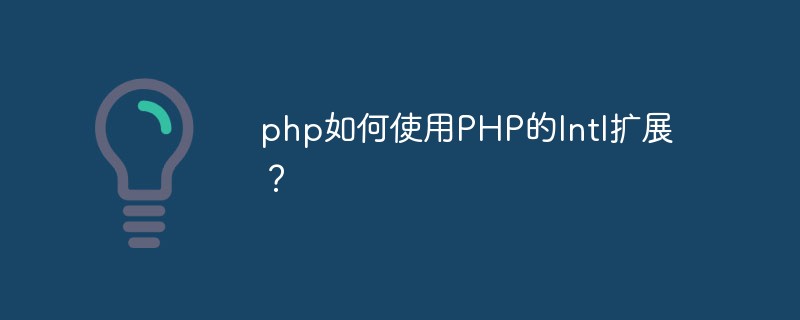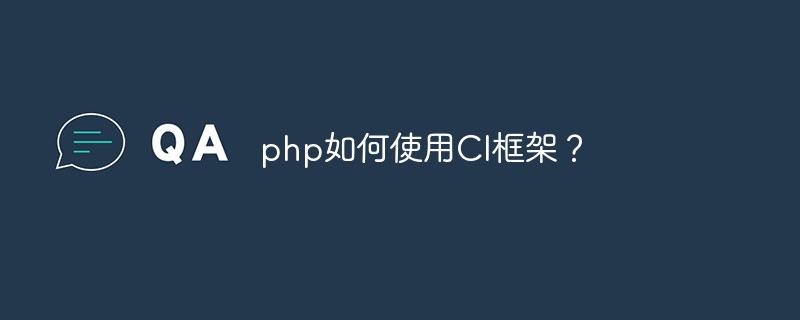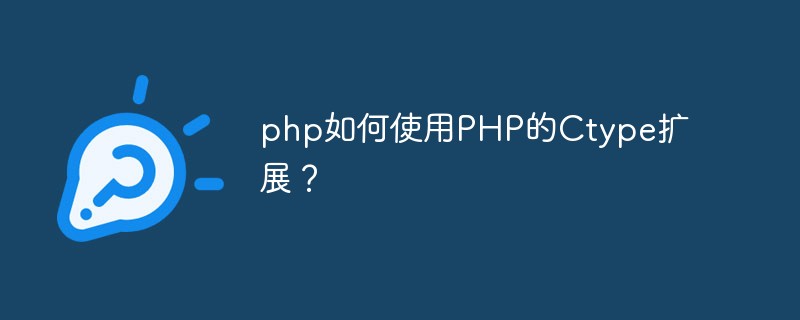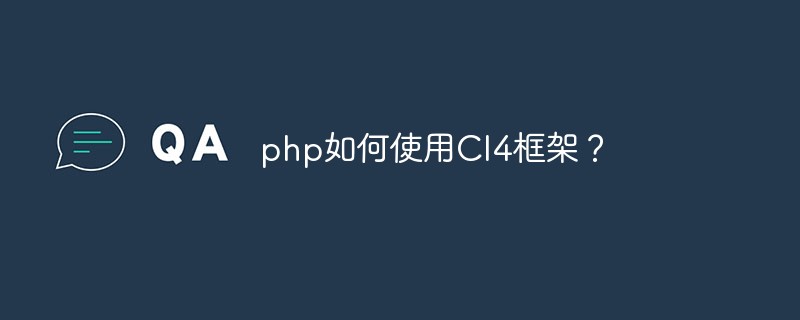This article mainly introduces relevant information on the specific use of CSS :focus-within, which has certain reference value. Interested friends can refer to it
The world of CSS is really a magical world . Many front-end developers may have heard of :focus but not :focus-within. So what the hell is :focus-within? In this article, we will talk about :focus-within.
:What is focus-within
In CSS: focus-within is a pseudo-class, which has now been included in the CSS selector (CSS Level 4 selector). It's like you know :focus or :hover . :focus-within is very convenient for handling the focus state. Elements with the :focus-within pseudo-class are effective when the element itself or one of its descendants has focus.
If the text is difficult to understand, let's look at a simple example first:
<p class="form-group">
<label for="email">
Your email:
</label>
<input type="email" name="email" id="email" placeholder="Enter your email address"/>
</p>The above is a simple form with an input form control.
.form-group *:focus {
background: yellow;
color: #000;
}
.form-group {
padding: 10px;
border: 3px solid transparent
}
.form-group:focus-within {
border-color: #000;
}In the above example, when .form-group gets focus, the border-color color is changed to #000. But this does not mean receiving keyboard focus, that is because
does not necessarily get keyboard focus and tabindex is not set. Or if the link or input element in p receives focus, then the .form-group element will change the border color.
Seeing the above example, don’t you think it’s amazing? To achieve similar effects in the past, we needed to use JavaScript scripts. Through the mouse or keyboard events of the descendant elements of .form-group, and then add the corresponding style to its parent element (or ancestor element).
:Usage scenarios of focus-within
:focus-within is very powerful, mainly because the pseudo-class will be activated when any of its elements obtains focus. . Use this pseudo-class with caution when the element contains many subcomponents.
With :focus-within, some common interactive behaviors have become very simple, especially the interactive behaviors that previously required JavaScript keyboard events, we can use :focus-within instead.
Next, let’s look at some common examples of :focus-within.
Highlighting of table rows
A common example is the behavior of table row highlighting, that is, when the mouse is hovering over the rows of the table, the color becomes highlighted . This interactive style can help visually impaired users better read a complex table or long form. Because of the highlighting, these users can more easily keep track of the table row they are currently reading. The way that was often implemented in the past was to use :hover to change the style of table rows. This solution is an easy task for normal users, but if your users have difficulty operating the mouse, then :hover It's a bit painful. If you're looking for perfection, you might add styles to table rows via JavaScript keyboard events.
So with :focus-within, we can say goodbye to JavaScript. We can style it like this:
The above example shows how to use :focus-within to highlight an entire row of a table. If there is an element available that can get focus in a particular table row, this refers to getting focus via the keyboard. For example, in the above example, there is an element in the table. You know, the a element can get focus through the keyboard.
At this time you only need to add in the style:
tbody tr:focus-within,
tbody tr:hover {
background: rgba(lightBlue, .4);
}Drop-down menu
The drop-down menu is ours One of the most common web components. When I first saw the :focus-within pseudo-class, the first use case that came to mind was drop-down menus.
In the above example, JavaScript is used to track the user's keyboard focus in a navigation drop-down menu. If JavaScript detects that keyboard focus is on a link, add a .has-focus class to .nav__list_drop. When li has the .has-focus class, its child elements will be displayed, that is, the drop-down menu will be displayed.
For this effect, we can directly replace the function of JavaScript script through :focus-within. Use .nav__list__drop:focus-within instead of .nav__list__drop.has-focus . Drop-down menus appear when you manipulate the keyboard to give focus to a drop-down menu item.
.nav__list a:focus + .nav__list__drop,
.has-drop:hover .nav__list__drop,
.nav__list__drop:focus-within {
opacity: 1;
transform: translateY(0px);
height: auto;
z-index: 1;
}Off-screen Nav
Off-screen Nav is a common effect on mobile terminals. Then we can also achieve this effect through :focus-within. For detailed code, you can see the following example:
Browser Compatibility
: focus-within Although it is very interesting, many students are worried about its compatibility. Through Caniuse, we can see the browser's support for it:
Summary
It's not surprising if you are familiar with :focus, but you know:focus-within If , it means that you are constantly paying attention to new features related to CSS. Of course this property refreshed the world of CSS again which is really weird. If you are interested, why not write the demo yourself. You will love this property.
The above is the detailed content of Explanation of the specific usage of CSS :focus-within. For more information, please follow other related articles on the PHP Chinese website!
 php如何使用PHP的Intl扩展?May 31, 2023 pm 08:10 PM
php如何使用PHP的Intl扩展?May 31, 2023 pm 08:10 PMPHP的Intl扩展是一个非常实用的工具,它提供了一系列国际化和本地化的功能。本文将介绍如何使用PHP的Intl扩展。一、安装Intl扩展在开始使用Intl扩展之前,需要安装该扩展。在Windows下,可以在php.ini文件中打开该扩展。在Linux下,可以通过命令行安装:Ubuntu/Debian:sudoapt-getinstallphp7.4-
 如何使用CakePHP中的数据库查询构造器?Jun 04, 2023 am 09:02 AM
如何使用CakePHP中的数据库查询构造器?Jun 04, 2023 am 09:02 AMCakePHP是一个开源的PHPMVC框架,它广泛用于Web应用程序的开发。CakePHP具有许多功能和工具,其中包括一个强大的数据库查询构造器,用于交互性能数据库。该查询构造器允许您使用面向对象的语法执行SQL查询,而不必编写繁琐的SQL语句。本文将介绍如何使用CakePHP中的数据库查询构造器。建立数据库连接在使用数据库查询构造器之前,您首先需要在Ca
 php如何使用CI框架?Jun 01, 2023 am 08:48 AM
php如何使用CI框架?Jun 01, 2023 am 08:48 AM随着网络技术的发展,PHP已经成为了Web开发的重要工具之一。而其中一款流行的PHP框架——CodeIgniter(以下简称CI)也得到了越来越多的关注和使用。今天,我们就来看看如何使用CI框架。一、安装CI框架首先,我们需要下载CI框架并安装。在CI的官网(https://codeigniter.com/)上下载最新版本的CI框架压缩包。下载完成后,解压缩
 php如何使用PHP的Ctype扩展?Jun 03, 2023 pm 10:40 PM
php如何使用PHP的Ctype扩展?Jun 03, 2023 pm 10:40 PMPHP是一种非常受欢迎的编程语言,它允许开发者创建各种各样的应用程序。但是,有时候在编写PHP代码时,我们需要处理和验证字符。这时候PHP的Ctype扩展就可以派上用场了。本文将就如何使用PHP的Ctype扩展展开介绍。什么是Ctype扩展?PHP的Ctype扩展是一个非常有用的工具,它提供了各种函数来验证字符串中的字符类型。这些函数包括isalnum、is
 Vue 中的单文件组件是什么,如何使用?Jun 10, 2023 pm 11:10 PM
Vue 中的单文件组件是什么,如何使用?Jun 10, 2023 pm 11:10 PM作为一种流行的前端框架,Vue能够提供开发者一个便捷高效的开发体验。其中,单文件组件是Vue的一个重要概念,使用它能够帮助开发者快速构建整洁、模块化的应用程序。在本文中,我们将介绍单文件组件是什么,以及如何在Vue中使用它们。一、单文件组件是什么?单文件组件(SingleFileComponent,简称SFC)是Vue中的一个重要概念,它
 php如何使用PHP的geoip扩展?Jun 01, 2023 am 09:13 AM
php如何使用PHP的geoip扩展?Jun 01, 2023 am 09:13 AMPHP是一种流行的服务器端脚本语言,它可以处理网页上的动态内容。PHP的geoip扩展可以让你在PHP中获取有关用户位置的信息。在本文中,我们将介绍如何使用PHP的geoip扩展。什么是PHP的GeoIP扩展?PHP的geoip扩展是一个免费的、开源的扩展,它允许你获取有关IP地址和位置信息的数据。该扩展可以与GeoIP数据库一起使用,这是一个由MaxMin
 php如何使用PHP的DOM扩展?May 31, 2023 pm 06:40 PM
php如何使用PHP的DOM扩展?May 31, 2023 pm 06:40 PMPHP的DOM扩展是一种基于文档对象模型(DOM)的PHP库,可以对XML文档进行创建、修改和查询操作。该扩展可以使PHP语言更加方便地处理XML文件,让开发者可以快速地实现对XML文件的数据分析和处理。本文将介绍如何使用PHP的DOM扩展。安装DOM扩展首先需要确保PHP已经安装了DOM扩展,如果没有安装需要先安装。在Linux系统中,可以使用以下命令来安
 php如何使用CI4框架?Jun 01, 2023 pm 02:40 PM
php如何使用CI4框架?Jun 01, 2023 pm 02:40 PMPHP是一种广泛使用的服务器端脚本语言,而CodeIgniter4(CI4)是一个流行的PHP框架,它提供了一种快速而优秀的方法来构建Web应用程序。在这篇文章中,我们将通过引导您了解如何使用CI4框架,来使您开始使用此框架来开发出众的Web应用程序。1.下载并安装CI4首先,您需要从官方网站(https://codeigniter.com/downloa


Hot AI Tools

Undresser.AI Undress
AI-powered app for creating realistic nude photos

AI Clothes Remover
Online AI tool for removing clothes from photos.

Undress AI Tool
Undress images for free

Clothoff.io
AI clothes remover

AI Hentai Generator
Generate AI Hentai for free.

Hot Article

Hot Tools

SublimeText3 English version
Recommended: Win version, supports code prompts!

DVWA
Damn Vulnerable Web App (DVWA) is a PHP/MySQL web application that is very vulnerable. Its main goals are to be an aid for security professionals to test their skills and tools in a legal environment, to help web developers better understand the process of securing web applications, and to help teachers/students teach/learn in a classroom environment Web application security. The goal of DVWA is to practice some of the most common web vulnerabilities through a simple and straightforward interface, with varying degrees of difficulty. Please note that this software

mPDF
mPDF is a PHP library that can generate PDF files from UTF-8 encoded HTML. The original author, Ian Back, wrote mPDF to output PDF files "on the fly" from his website and handle different languages. It is slower than original scripts like HTML2FPDF and produces larger files when using Unicode fonts, but supports CSS styles etc. and has a lot of enhancements. Supports almost all languages, including RTL (Arabic and Hebrew) and CJK (Chinese, Japanese and Korean). Supports nested block-level elements (such as P, DIV),

Notepad++7.3.1
Easy-to-use and free code editor

PhpStorm Mac version
The latest (2018.2.1) professional PHP integrated development tool






